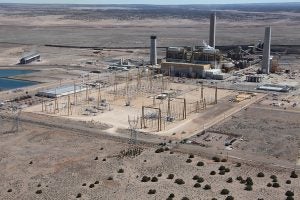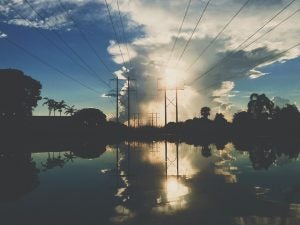 When it comes to the history and DNA of a city, new buildings have nothing on century-old ones. Yet the reverse can be said in regard to water and energy efficiency. Older buildings reflect the culture and history of a community, but typically are highly inefficient.
When it comes to the history and DNA of a city, new buildings have nothing on century-old ones. Yet the reverse can be said in regard to water and energy efficiency. Older buildings reflect the culture and history of a community, but typically are highly inefficient.
Such was the case with the Butler Brothers Building in Dallas, a previously-abandoned 1910 structure that was often referred to as an eyesore. So when the real estate developer Alterra International decided to turn the building into a mixed-use complex with apartments, hotel rooms, and retail space, a lot of work was needed to improve its water and energy efficiency – work that required up-front capital investments.
Through the Texas PACE Authority’s “PACE in a Box” model, Alterra International was able to secure $23.9 million in PACE financing for upgrades that will slash carbon pollution, cutting energy use by about 40 percent and annual water use by almost 700,000 gallons.
Property Assessed Clean Energy (PACE) is a financing model that helps local governments and the private sector back energy efficiency and renewable energy upgrades for homes and businesses. Texas is the only state that includes water in its PACE programs and could serve as a model for other water-strapped states. Read More »
 In Cape Town, South Africa, the countdown is on for Day Zero when water taps in the city of 4 million people are expected to run dry.
In Cape Town, South Africa, the countdown is on for Day Zero when water taps in the city of 4 million people are expected to run dry.











 Today is Energy Efficiency Day in the U.S. As someone who’s advocated for energy efficiency for nearly a decade, I’m glad to see the resource celebrated. Efficiency, from LED lightbulbs to insulation, is the
Today is Energy Efficiency Day in the U.S. As someone who’s advocated for energy efficiency for nearly a decade, I’m glad to see the resource celebrated. Efficiency, from LED lightbulbs to insulation, is the  When it comes to the history and DNA of a city, new buildings have nothing on century-old ones. Yet the reverse can be said in regard to water and energy efficiency. Older buildings reflect the culture and history of a community, but typically are highly inefficient.
When it comes to the history and DNA of a city, new buildings have nothing on century-old ones. Yet the reverse can be said in regard to water and energy efficiency. Older buildings reflect the culture and history of a community, but typically are highly inefficient. Resiliency is a hot button word right now. Ten years ago, advocates focused on “adaptation,” or the idea of adapting to the coming effects of climate change. Now the focus is on “resiliency,” the ability to bounce forward – not backward – when something disastrous happens.
Resiliency is a hot button word right now. Ten years ago, advocates focused on “adaptation,” or the idea of adapting to the coming effects of climate change. Now the focus is on “resiliency,” the ability to bounce forward – not backward – when something disastrous happens.